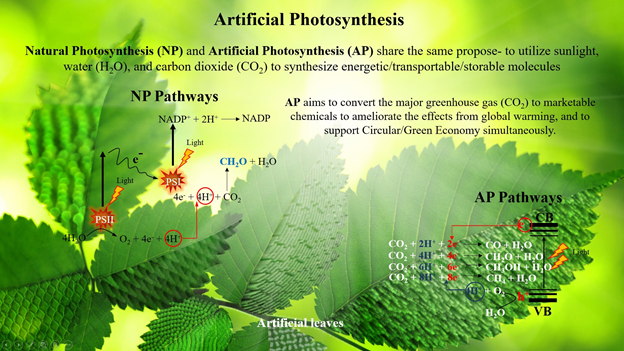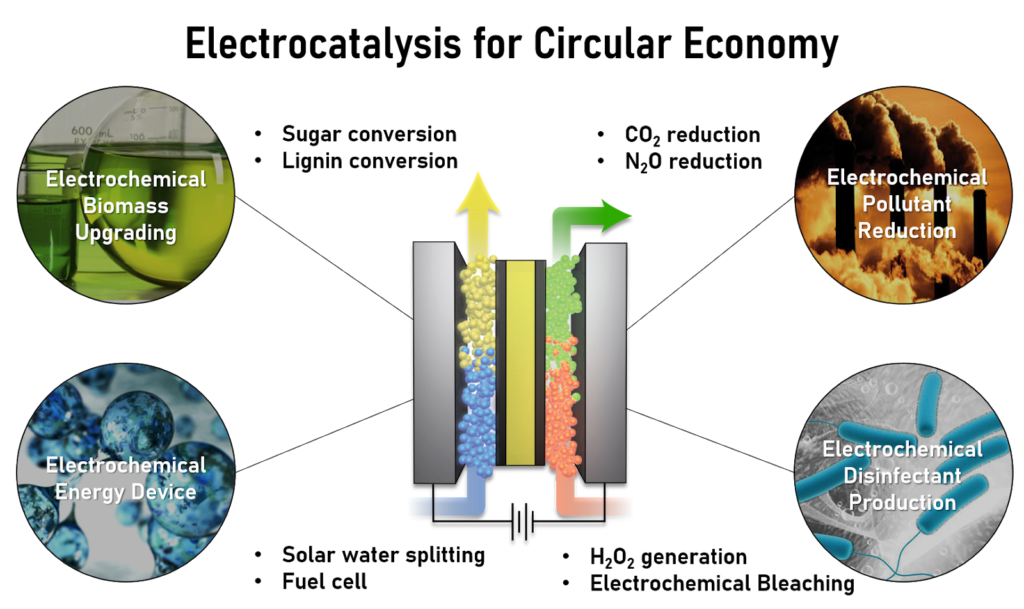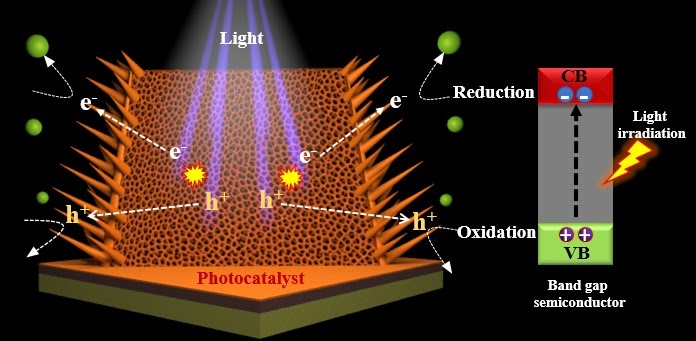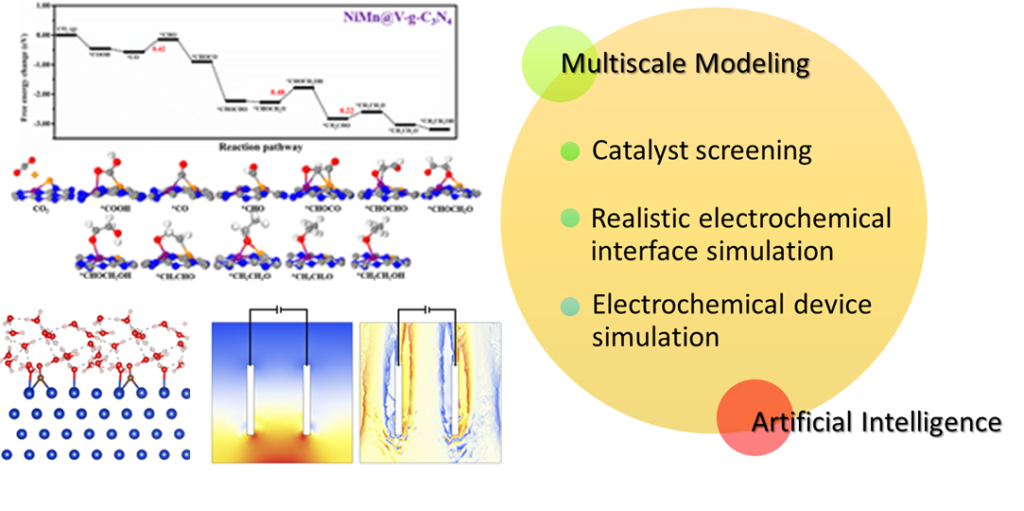National Science and Technology Development Agency | National Nanotechology Center
Research
Artificial photosynthesis for CO2 decarbonization

Artificial photosynthesis (AP) mimics natural photosynthesis by absorbing solar energy and using it to generate fuels or chemicals from carbon dioxide (CO2) and water. AP simultaneously addresses the current global crises, including the shortage of fossil resources and the increase in greenhouse gases and pollution emission. By combining our expertises in photocatalysis, electrocatalysis, reactor engineering, in-depth characterizations, computational modeling, and artificial intelligence, we are building a seamless research environment to drive AP technology from a concept to practical applications. Moreover, we are cooperating with both private sectors and international research institutes who are equally committed to building a carbon-negative society with sustainable economic growth.

ELECTROCATALYSIS
Electrocatalysis technologies driven by renewable electricity are paving the way towards a circular economy. An electrochemical device, consisting of 2 separated half-reactions i.e. oxidation and reduction, offers a unique opportunity for each reaction to be designed and optimized individually. At NCAS, we are designing new electrocatalysts and electrochemical device concepts for chemical, energy, and environmental applications including:
- CO2 reduction reaction (CO2RR)
- Biomass upgrading i.e. oxidation of sugar derivatives
- Pollutant reduction i.e. N2O reduction
- Energy generation and storage i.e. water splitting and fuel cell catalysts
- Disinfectant production i.e. production of H2O2 from O2
Our facility is equipped for material synthesis, electrochemical testing, electrochemical devices and reactors, online product detections, as well as ex situ and in situ characterizations. With a team of experimental and theoretical research scientists, we are taking a combined experimental and theoretical approach to accelerate the development of electrochemical technologies from lab-scale to industrial solutions.

PHOTOCATALYSIS
Photocatalysis is a process in which light energy is used to drive pairs of chemical reactions. Excited electron (e–) and hole (h+) pairs from light radiation can drive redox reactions such as carbon dioxide reduction, organic waste treatment, biomass fractionation and conversion, and transformation of chemical molecules. Although the concept of photocatalysis is considered as one of the most encouraging technologies, there are some challenging problems related to the photocatalyst materials such as
1) fast recombination rate of e– and h+ pairs
2) wide band gap of semiconductors
3) low stability and reusability of the catalysts.
Our research team is developing novel light absorbers and nanostructured materials which could overcome these limitations for enhanced photocatalytic performance. We focus on low-cost catalysts such as metal oxides, metal sulfides and chalcogenides, metal-organic frameworks, carbon-based materials, and their composites integrated with advanced engineering on catalytic testing systems.

ARTIFICIAL INTELLIGENCE AND MULTISCALE MODELING FOR ELECTROCHEMICAL CO2 REDUCTION REACTION
The challenges and opportunities facing AP technologies are understanding and optimizing the multitude of processes occurring in the fully three-dimensional systems. These processes span different length and time scales, interplaying between various complex phenomena that govern the activity and selectivity of the CO2 reduction reaction (CO2RR), the ionic and electronic transport, as well as the overall energy-conversion efficiencies. Therefore, it will be necessary to incorporate the theoretical studies of the multiscale modeling approach, ranging from atomistic to continuum models.
At NCAS, it is our mission to develop the numerical and analytics frameworks, as well as, garner the fundamental knowledge, which are deemed important for the development of AP technology for CO2RR. We are currently focusing in three key areas, including
- Machine learning based high-throughput screening of catalysts
- Realistic electrochemical interphase simulation for CO2 electrochemical reaction mechanisms toward C2 products
- Continuum Based Device Model and AI Assisted Reverse Engineering Workflow
